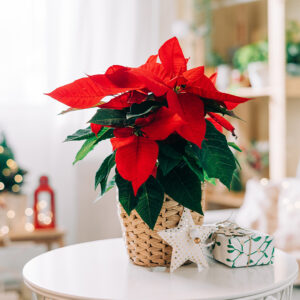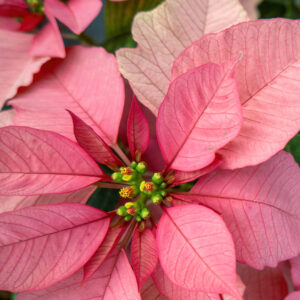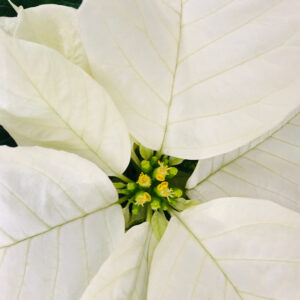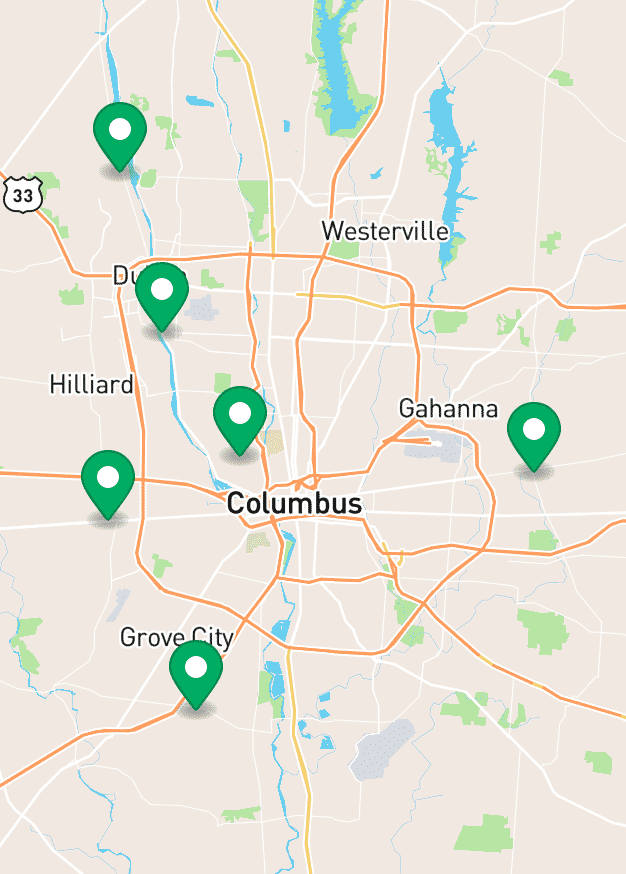How to Keep a Poinsettia (Euphorbia pulcherrima) Blooming for Next Year
Poinsettias, scientifically known as Euphorbia pulcherrima, are iconic holiday plants recognized for their vibrant bracts (the colored leaves that are often mistaken for flowers) and lush green foliage. Though most commonly seen in red, poinsettias come in a variety of colors including white, pink, peach, and variegated combinations, making them versatile additions to holiday decor. With the right care and attention, you can keep your poinsettia healthy and encourage it to bloom again next year. Here’s a step-by-step guide to caring for your poinsettia beyond the holiday season.
Popular Colors and Pairings for Poinsettias
Poinsettias are available in more than just the classic red. Here are some beautiful color options and pairing ideas:
- Red
The traditional red poinsettia pairs well with green foliage plants or silver decor for a festive look.
- White
White poinsettias add a sophisticated, neutral touch. They look stunning alongside other white or silver accents for a wintery feel.
- Pink
Pink poinsettias provide a softer, romantic hue. Pair them with white or pastel decorations to create a delicate aesthetic.
- Peach and Salmon
Peach and salmon varieties give a unique twist, bringing warmth to holiday decor. They look lovely with gold or bronze accents.
- Variegated
Variegated poinsettias, with mixed colors or marbled patterns, add an eye-catching focal point. These are striking when paired with simple, monochromatic decor.
Post-Holiday Care: Keeping Your Poinsettia Healthy
After the holidays, it’s essential to transition your poinsettia to regular indoor plant care to keep it healthy.
Remove Faded Bracts and Leaves
After blooming, your poinsettia may start to drop its colored bracts. Gently remove any faded bracts or leaves to help the plant focus on new growth.
Optimal Light Conditions
Place your poinsettia in a bright location where it can receive indirect sunlight for at least six hours a day. Avoid placing it in direct sunlight, which can scorch the leaves, or in low light, which can weaken the plant.
Temperature Requirements
Poinsettias prefer indoor temperatures between 65-75°F (18-24°C) during the day and slightly cooler at night, around 60°F (15°C). Avoid cold drafts, heat sources, and sudden temperature changes, as these can stress the plant.
Watering and Fertilizing Routine
Maintaining the right watering and feeding schedule is crucial to encourage growth throughout the year.
Watering
Water your poinsettia when the top inch of soil feels dry to the touch. Water thoroughly, allowing excess water to drain out of the pot, and avoid letting the plant sit in standing water, as this can lead to root rot.
Fertilizing
Once new growth begins in early spring, start feeding your poinsettia with a balanced, all-purpose houseplant fertilizer every 4-6 weeks. This will support healthy foliage and help the plant store energy for next year’s blooms.
Pruning in Spring
Pruning encourages bushier growth and helps shape the plant.
When and How to Prune
In late winter or early spring, prune your poinsettia back to about 4-6 inches, leaving several leaves on each stem. This will encourage the plant to branch out and grow more compactly.
Additional Pinching
Throughout spring and summer, you can continue pinching back new growth to maintain a bushy shape. Stop pinching around mid-August to allow time for buds to set for the next blooming period.
Repotting Your Poinsettia (If Needed)
If your poinsettia has become root-bound or if the soil seems depleted, repotting in spring can give it a fresh start.
Choosing the Right Pot and Soil
Select a pot that is one size larger than the current one, with drainage holes to prevent waterlogging. Use a well-draining, nutrient-rich potting mix. A soil mix designed for indoor plants or one with added perlite or sand for drainage works well.
Repotting Steps
- Gently remove the poinsettia from its current pot and shake off excess soil.
- Place it in the new pot and fill in around the roots with fresh soil, ensuring the plant is at the same depth it was before.
- Water the plant thoroughly and place it in a well-lit location to support recovery and growth.
Encouraging Re-Blooming in the Fall
To encourage your poinsettia to bloom for the holidays, it will need a period of darkness in the weeks leading up to winter.
Creating a Dark Period
Starting in late September or early October, place your poinsettia in complete darkness for 12-14 hours each night. You can cover it with a cardboard box or place it in a closet, ensuring no light reaches it. During the day, return it to bright, indirect sunlight.
Timing and Consistency
The dark period should be maintained for about 8-10 weeks, until you start to see color in the bracts. Consistency is key—interruptions can delay or prevent blooming.
Returning to Normal Light
Once the bracts begin to color, you can stop the dark period treatment and return the poinsettia to bright, indirect light. At this point, resume regular watering and enjoy the vibrant colors as they reappear.
Troubleshooting Common Issues
Poinsettias are relatively hardy but may face a few issues. Here’s how to address some common problems:
Leaf Drop
Leaf drop can be caused by sudden temperature changes, low humidity, or inconsistent watering. Maintain a stable environment and water only when the top inch of soil feels dry.
Yellowing Leaves
Yellowing can result from overwatering or nutrient deficiencies. Check soil moisture levels and ensure the plant is receiving balanced fertilizer.
Pest Issues
Poinsettias can occasionally attract pests like whiteflies or spider mites. If pests appear, isolate the plant and use insecticidal soap or neem oil to treat the affected areas.
Summary: Year-Round Care for Reblooming Poinsettias
Caring for a poinsettia beyond the holiday season requires attention to light, temperature, and pruning, but the reward is a stunning, colorful display the following year. Here’s a quick summary for year-round care:
- Winter (Post-Holiday): Remove spent bracts, maintain bright, indirect light, and reduce watering.
- Spring: Prune back stems, repot if needed, and start regular fertilizing.
- Summer: Place the plant in bright light, continue moderate watering, and pinch back growth as needed.
- Fall (Bloom Preparation): Provide a 12-14 hour dark period for 8-10 weeks, then return to bright light once bracts show color.
- Winter: Resume regular care, enjoy the blooms, and repeat the cycle!
Find Healthy Poinsettias and Supplies at Strader’s Garden Center
Looking to add a poinsettia to your home, or need plant care supplies? Strader’s Garden Center offers a beautiful selection of poinsettias in various colors as well as everything you need to keep them blooming for years to come. Stop by and speak with our experts to find the perfect poinsettia for your home. Happy growing!















